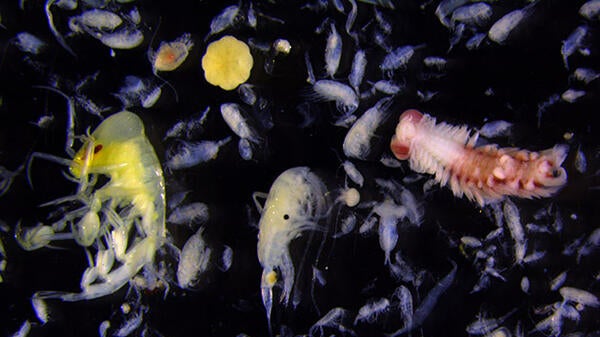Earlier this year, BIOS associate scientist and zooplankton ecologist Leocadio Blanco-Bercial published a paper in the scientific journal Frontiers in Marine Science that sheds light on zooplankton communities in the Sargasso Sea, where zooplankton diversity is among the highest in the world’s ocean.
Celebrating 35 Years of Particle Flux Measurements in the Sargasso Sea
April 26, 2013
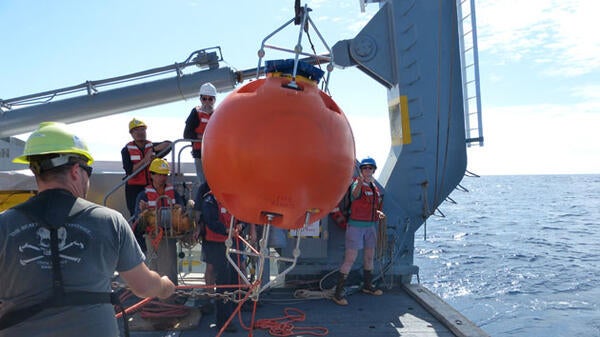
Since 1978 the Oceanic Flux Program (OFP) has been studying particle fluxes in the deep Sargasso Sea. This year, the OFP celebrates 35 years of continuous measurements, making it the longest running time-series of its kind. “This is a monumental achievement for oceanography and for the US National Science Foundation, which supports the OFP. It is remarkable to look back at all we have learned about the workings of the deep ocean since the OFP began. And as we add ever more sophisticated instruments on the OFP mooring, it is really exciting to look forward to more discoveries about the deep,” says Dr. Maureen Conte, Associate Scientist at BIOS and Adjunct Scientist at the Marine Biological Laboratory Ecosystems Center in Woods Hole, Massachusetts.
Don’t Let Their Size Fool You
November 25, 2019
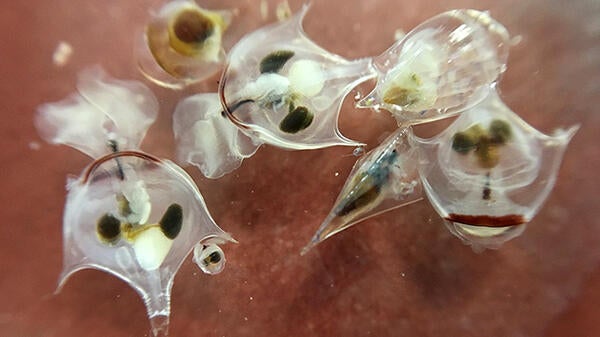
For nearly a hundred years, scientists have known that plankton—the microscopic organisms that drift and float in the ocean, also known as marine microbes—form the basis of the ocean’s food web. Phytoplankton (literally “plant wanderers”) are photosynthetic, like their terrestrial counterparts, and convert sunlight into energy. Phytoplankton, in turn, are consumed by zooplankton (literally “animal wanderers”), as well as a host of larger marine organisms, including juvenile fish, shellfish, birds, and even whales. However, scientists are now learning that plankton play an even larger role in earth’s complex biogeochemical systems.
High School Student Achieves Scientific Success at BIOS
March 27, 2018
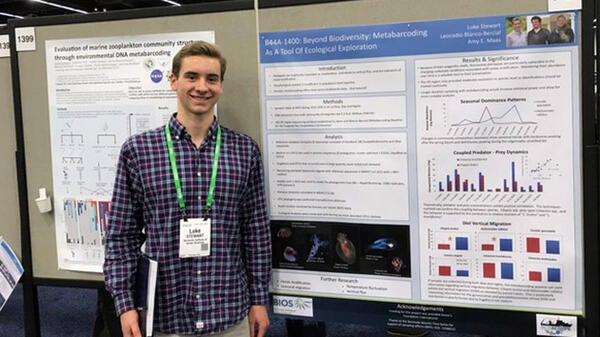
It’s not every day that you meet a high school student who already has three summers of scientific research, as well as a poster presentation at a professional scientific conference, under his belt. But Luke Stewart isn’t your average student.
An Early Introduction to Science
February 27, 2020
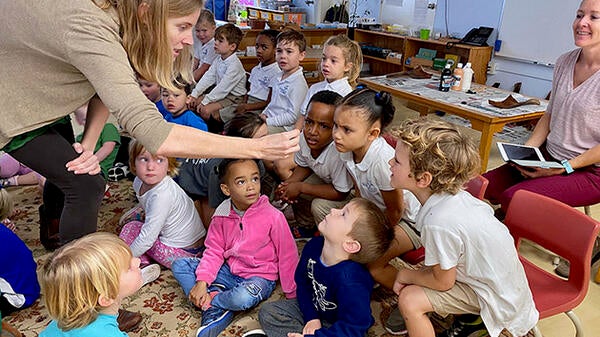
Primary students at Saltus Upper Primary School and Somersfield Academy gained an early introduction to ocean science in January through in-school presentations from two BIOS scientists. The presentations, part of BIOS’s Curriculum Enrichment Program, supported local teachers who wanted to enhance science, technology, engineering, and mathematics (STEM) content in their classrooms through immersive experiences with their students.
Scientist at Work: A Conversation with BIOS Biologist Leocadio “Leo” Blanco-Bercial
March 30, 2015
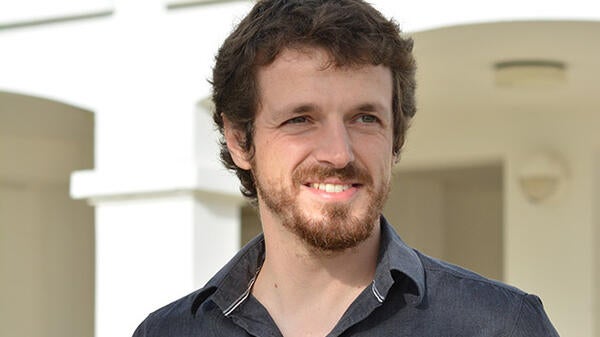
Leo Blanco-Bercial grew up fishing for mackerel and tuna off the coast of his native Spain, but for his career has gravitated to studies of the tiniest of marine organisms: plankton. Blanco-Bercial, 36, began work at BIOS in January with the intention of continuing his plankton studies, specifically their genetics. He also plans to continue educating his Europe-based family, he said. “During visits home, I like explaining how plankton nourish the fish that we love catching and eating.”
A Marriage of Science and Art
June 28, 2018
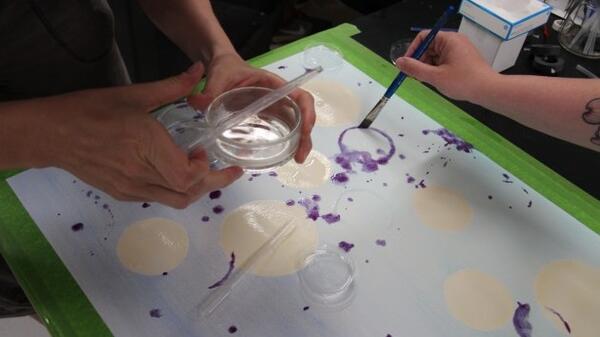
As scientists work to answer progressively complex questions about the earth and its changing climate, they are becoming more aware of the importance of communicating their findings to the public. To improve the likelihood that their messages are heard, understood, and made accessible, they are increasingly turning to art.
A Big Project for Small Organisms—and the Atmosphere
October 26, 2018
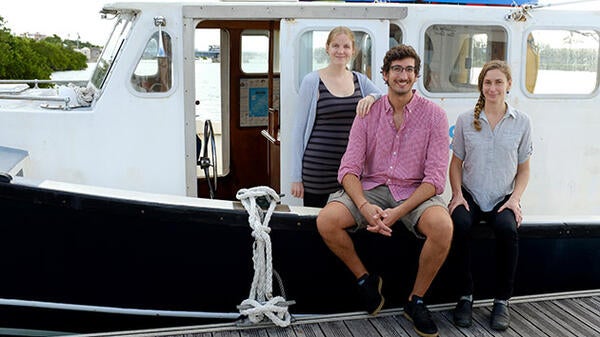
A multidisciplinary team of scientists, including a group from BIOS, spent six weeks this summer focused on the Pacific Ocean to study the lives and deaths of plankton, organisms that play a critical role in removing carbon dioxide from the atmosphere and in the ocean’s carbon cycle.
The Ocean’s Tiny Records of Climate Change
November 28, 2018
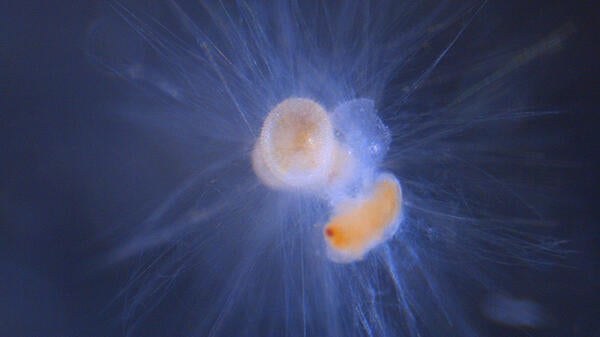
We have known for decades that scientists can learn about local climate conditions by studying the growth rings in trees. Wide rings form in warmer years with more precipitation; thinner rings indicate a colder, dryer growing season; and scars provide evidence of external environmental factors, such as forest fires and insect infestations.
Understanding the Ocean of the Past Using Ocean Sediments
January 30, 2014
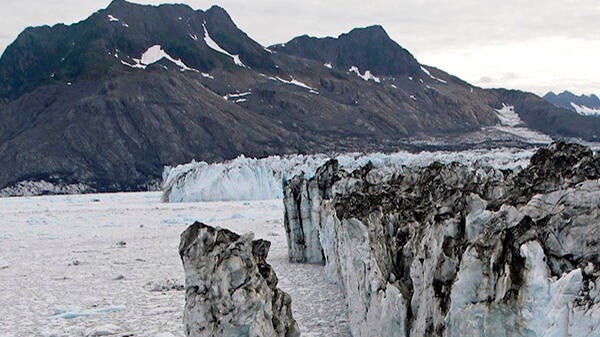
During the last glacial period much of the Northern Hemisphere was blanketed by one or more sheets of ice. Throughout this period, chunks of these continental ice sheets often broke off and surged into the North Atlantic, carrying with them large amounts debris and freshwater. These events, called Heinrich events, are often thought to have been responsible for changes in ocean circulation patterns; specifically, weakening the Atlantic Meridional Overturning Circulation (AMOC), a system of currents that transports water and heat from the Southern to the Northern Hemisphere in the Atlantic basin.
